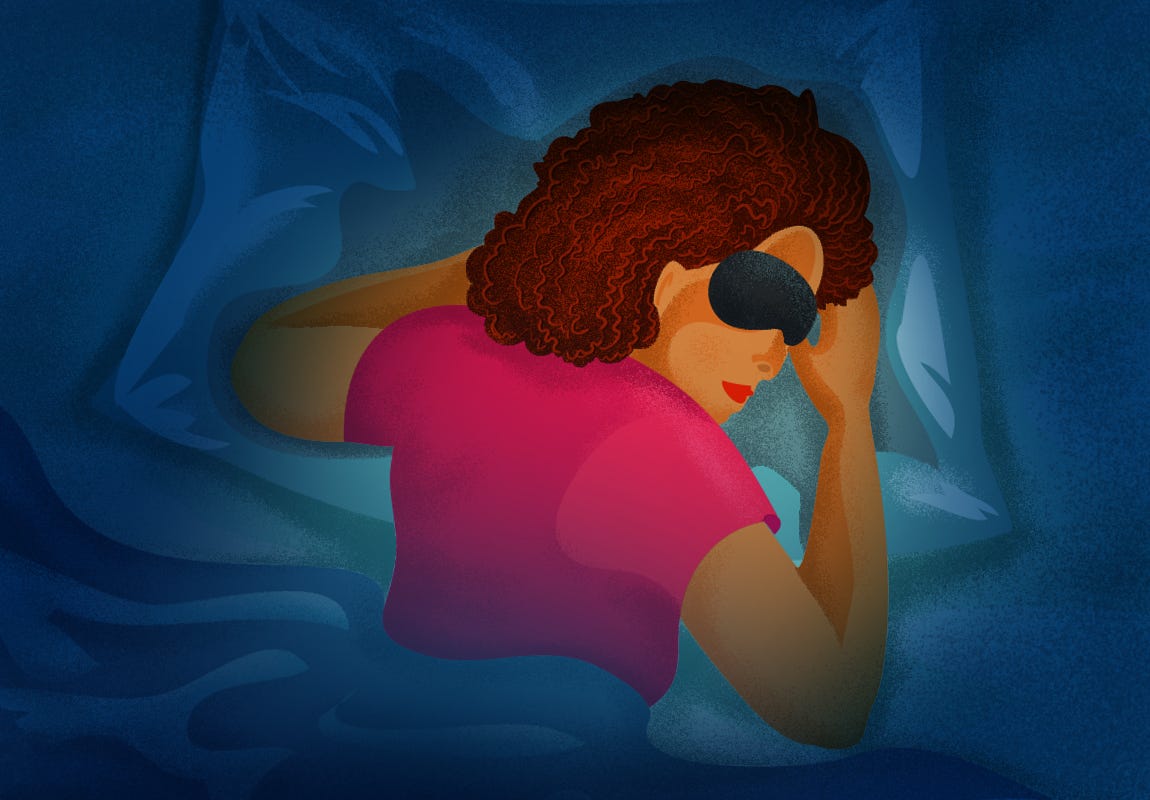A sleep disorder is a condition that affects a person's ability to function normally when awake by impairing sleep quantity, quality, or duration. It may be symptoms of underlying mental health issues and can lead to other medical problems.
In 1979, the American Sleep Disorders Association published the first classification scheme for sleep disorders. Our knowledge and understanding of the health benefits of sleep have evolved over the last four decades. Over 100 distinct sleep disorders have been identified, and current classifications use sophisticated approaches to classify these diseases based on their aetiology, symptoms, and physiological and psychological impacts, among other factors.
Various factors can contribute to sleep problems. Although the causes vary, the end result of all sleep disorders is a disruption or exaggeration of the body's natural cycle of slumber and daytime wakefulness. The following are eight factors:
● Physical Ailment
● Medication
● Psychiatric disorders
● Lifestyle
● Irregular sleep patterns
● Genetics (narcolepsy is genetic).
● Ageing (about half of all adults over the age of 65 have some sort of sleep disorder).
Types of Sleep Disorders
Insomnia, Sleep Apnoea, Parasomnias and Narcolepsy are the major types of sleep disorders.
Insomnia
It refers to the inability to fall asleep or remain asleep. It can be caused by various factors like stress, jet lag, anxiety, hormones, and digestive problems. It can adversely affect the overall life quality of a person.
Insomnia is classified into three categories:
Chronic: Sleeplessness happens on a regular basis for at least one month.
Intermittent: Happens periodically
Transient: Lasts just a few nights at a time
Sleep Apnoea
Sleep Apnoea is characterised by pauses in breathing while sleeping. This is a serious medical condition that causes you to wake up during the night.
Parasomnias
Parasomnias are a class of sleep disorders that cause abnormal movements and behaviours during sleep. They include
Sleepwalking: Sleepwalking formerly known as somnambulism is a behaviour disorder that originates during deep sleep and results in walking or performing other complex behaviours while asleep. It is much more common in children than adults and is more likely to occur if a person is sleep deprived. Because a sleepwalker typically remains in deep sleep throughout the episode, he or she may be difficult to awaken and will probably not remember the sleepwalking incident. Sleepwalking usually involves more than just walking during sleep. It is a series of complex behaviours that are carried out while sleeping, the most obvious of which is walking. Symptoms of sleepwalking disorder range from simply sitting up in bed and looking around, to walking around the room or house to leaving the house and even driving long distances.
Nightmares: Nightmares are similar to dreams in that they contain vivid imagined activity during sleep often with an intense emotional experience or memory. Nightmares begin to occur in childhood, and they are thought to be a part of our ability to develop appropriate fear responses to real-world threats. Nightmares are usually remembered at least somewhat by the person who experiences them. This is true for children as well, who can often describe the fearsome details.
Night Terror: Night terror, also known as sleep terror, is a sleep disorder which causes feelings of terror or dread, and typically occurs during the first hours of stage 3-4 non-rapid eye movement (NREM) sleep. Sleep terrors begin in children between the ages of 3 and 4, and usually stop during adolescence. In adults, they most commonly occur between the ages of 20 to 30. Though the frequency and severity vary between individuals, the episodes can occur in intervals of days or weeks but can also occur over consecutive nights or multiple times in one night. This has created a situation in which any type of nocturnal attack or nightmare attack or nightmare may be confused with and reported as night terror.
Narcolepsy: Narcolepsy is characterised by “sleep attacks” that occur during the day. This means that you will suddenly feel extremely tired and fall asleep without warning. The disorder can also cause sleep paralysis which may make you physically unable to move right after waking up. Although narcolepsy may occur on its own, it is also associated with certain neurological disorders, such as multiple sclerosis.
If your sleep is disturbed, don't hesitate to take medical assistance.
Now put on your thinking hats and think about the following questions for a couple of minutes.
Can you think of some factors that may contribute to sleep disorders?
Can you think of some ways to manage your sleep disorder?
Write down your thoughts and discuss them with your students, children, and your colleagues. Listen to their views and compare them with your own. As you listen to others, note how similar or different your views are to others’.
Thank you for listening. Subscribe to The Scando Review on thescandoreview.com.
Happy Teaching!













Sleep Disorder